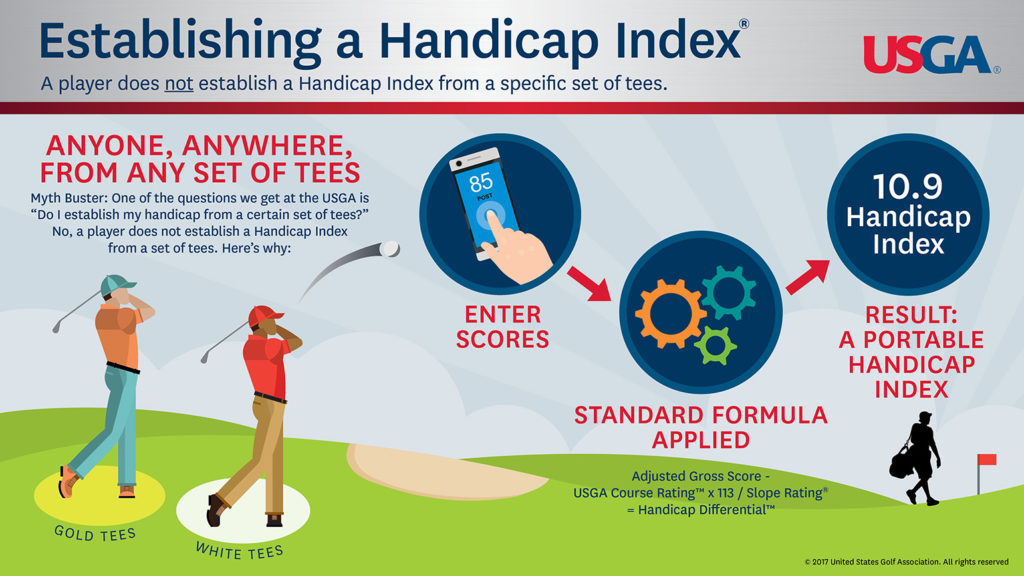At some point in every golfer’s journey, you’ll feel a bit like you’re lost at sea: drifting aimlessly across the course, with your ball never finding it’s way home. Desperate times like these call for desperate measures, so I’m going to suggest something radical: learn more about the rules. You may think the Rules of Golf only exist to punish you, but if you dig a little deeper, you may actually find a way to save a stroke or two. When you set off for your next round, one of these may just be the life raft you’ll want in case the journey goes awry:
Local Rule E-5: If your drive is lost or goes OB, you can take a drop in the fairway instead of reloading.
Some days, the driver just isn’t your friend. If you’re not confident you can keep a second drive in play or just want to avoid the walk of shame back to the tee, there is another option for a lost drive. You can take a drop in the fairway (up to 2 club lengths from the rough), on the line with where your drive left play, with a two-stroke penalty. This may be your best option at guaranteeing your 4th shot is from the fairway.
Rule 13.1c: You can fix any damage (with the exception of aeration holes and natural wear) and remove any loose impediments in your line of play on the green.
Keep your divot tool handy. No, this doesn’t mean you can completely level the green, but it does mean you can make repairs when some dummy steps on your line. Sorry to those of you who are running out of excuses for your poor putting.
Rule 16.3: Free relief if your ball is embedded in the rough
While the wet, muddy days on the course may be few and far between here in Southern California, you’ll still have the occasional moonshot that gets cratered in the rough. Don’t worry: under the new rules, you’re entitled to free relief if this happens. No need to turn your club into a weed whacker anymore.
Rule 19.3: Take a drop outside a bunker with two-stroke penalty
One of the most frustrating experiences on the course is getting trapped in a bunker and no matter how hard you swing, the ball just won’t leave. If you come across a ball buried in the trap or in front of an insurmountable wall of sand, consider this: you can take a straight line back from where your ball lies and drop in a one club-length relief area on that line. Sure, it comes with a two-stroke penalty, but it may actually save you strokes (along with saving your from extra effort and embarrassment).
Rule 17.1b: You can play a ball from a penalty area
:max_bytes(150000):strip_icc():format(webp)/adam-scott-water-hazard-56a3d1be5f9b58b7d0d3fd1a.jpg)
Photo: Getty Images
Sometimes the golf gods smile upon you, and you find your wayward shot that crossed into a penalty area. If your ball is lying in a penalty area defined by red or yellow stakes (generally marking water or other similar hazards), you can actually play the ball where it lies instead of taking a drop and one-stroke penalty. It may not always be the best idea, but if you want to roll up your pants and take a whack out of the water, the rules won’t stop you. Unfortunately, if you hit one OB (defined by white stakes), you’ll have no such luck and need to re-hit from the original spot.
Bonus Rule: Get your handicap
At the end of the round, there’s only one person you should be comparing your score to: yourself. The fact is that most golfers will shoot over par on just about every round, so is par really a fair barometer of how you played? Alternatively, if you keep a Handicap Index, you’ll have a personalized target score for every round depending on the difficulty of the course and can track your improvement from round to round. Furthermore, if your competing against your friends by playing straight up or arbitrarily handing out strokes, your probably hurting your chances. Using your Handicap Index is the most accurate method to determine how many strokes each player should get and ensuring that golfers of all skill levels can compete fairly.
One additional lifesaver you’ll discover: net double bogey. When posting a score for handicap purposes, the max score you can take on any hole is net double bogey (double bogey plus any handicap strokes you receive), saving yourself from those tragic blow-up holes. Learn more about net double bogey and other handicap hints here.
Need a Handicap Index to start saving your rounds? Get started for 60 days free here.





